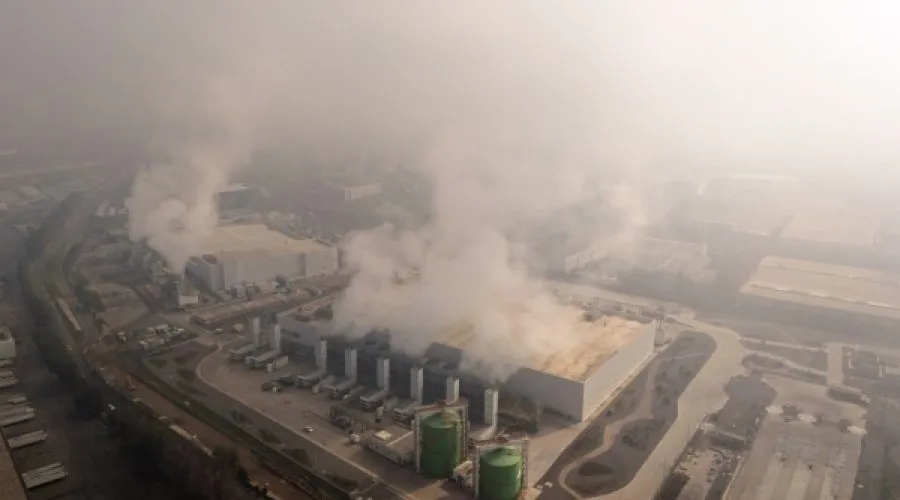Global AI Frenzy and Energy Consumption Surge: What Investors and Entrepreneurs Need to Know for Sustainable Business Growth
The United States has become the epicenter of a booming data center industry, with major technology giants like OpenAI, Amazon, Google, and Microsoft investing hundreds of billions of dollars to build massive computing facilities aimed at advancing artificial intelligence. However, this construction surge has also spread internationally, often under less rigorous scrutiny.
According to an analysis by Synergy Research Group, nearly 60% of the world’s 1,244 largest data centers were located outside the U.S. as of June. The global expansion continues with at least 575 data center projects underway by companies such as Tencent, Meta, and Alibaba.
These data centers require enormous amounts of electricity and water to operate and cool their equipment. Their growth has contributed to or worsened resource challenges not only in Mexico but also in over a dozen other countries, as revealed by a New York Times investigation.
In Ireland, for instance, data centers consume over 20% of national electricity. In Chile, vital aquifers face depletion risks. South Africa, which already suffers routine blackouts, sees its power grid further strained by these facilities. Similar concerns have emerged in Brazil, the UK, India, Malaysia, the Netherlands, Singapore, and Spain.
Compounding the issue is limited transparency. Tech companies often use subsidiaries and service providers to construct data centers, obscuring their involvement and disclosing little about resource usage.
Many governments, eager to establish an AI presence, have offered incentives such as cheap land, tax breaks, and resource access while adopting a lenient regulatory stance.
Tech firms emphasize that the data center boom brings jobs and investment. They also claim to be reducing environmental impacts through renewable energy and water recycling initiatives.
Microsoft, for example, stated it had no evidence that its data center complex in central Mexico impacted local power or water supplies. The company acknowledged unstable electricity in the region but noted its water usage is minimal and electricity consumption could power roughly 50,000 homes annually.
“We looked deeply and found no indication that our data centers have contributed to blackouts or water shortages in the region,” said Bowen Wallace, Microsoft’s corporate vice president for data centers in the Americas. “We will always prioritize the basic needs of the community.”
However, Alejandro Sterling, director of industrial development in central Mexico, acknowledged grid capacity issues causing blackouts, saying, “Our capacity has been overdrawn.”
Establishing definitive links between data centers and local power or water shortages remains challenging. Yet building in areas with fragile infrastructure and existing resource limitations increases strain and the risk of cascading failures, experts say.
Activists, residents, and environmental groups worldwide have rallied against data centers, campaigning for project halts, greater oversight, and transparency.
In Ireland, restrictions now limit new data centers around Dublin due to “significant risk” to power supplies. Google abandoned plans for a Chilean center after protests highlighted water depletion concerns. Construction on some Dutch data centers has also been paused for environmental reasons.
“Data centers are where environmental and social issues meet,” said Rosi Leonard of Friends of the Earth Ireland. “There is a narrative that they will bring wealth and growth, but this is a real crisis.”
Despite these challenges, spending on global data center infrastructure is projected to reach $375 billion this year and $500 billion in 2026, according to UBS. By 2035, data centers’ electricity consumption worldwide could rival that of India, the world’s most populous nation. A single data center can use over 500,000 gallons of water daily — nearly the volume of an Olympic-sized swimming pool.
In Querétaro, central Mexico, an official overseeing the country’s push to become a data center hub characterized power and water disruptions as “happy problems,” a cost of progress.
“Not for the people that suffer it, but for the development of the place,” said Alejandro Sterling.
This sentiment is echoed globally as governments compete to attract tech investment. Brazil offers new tax breaks, Malaysia has designated industrial zones for tech firms, and the UAE and Saudi Arabia lobbied for access to AI chip technology in the U.S. The European Union also plans to invest billions in regional data centers.
Microsoft’s large facility in central Mexico sits atop a hill that was once a grazing area for Indigenous communities near a natural spring. The site is now fenced with a newly constructed reservoir visible from drone footage.
Data centers began arriving in Querétaro about five years ago, drawn by proximity to the U.S., relative safety from violence, and a welcoming local government. Microsoft was the first, followed by Amazon and Google, triggering a construction boom.
Yet, local small towns, historically struggling with basic services, have since experienced extended water shortages and blackouts. Residents reported adverse effects on vulnerable populations, including patients requiring consistent power for medical treatments and refrigeration.
Mexico’s national power company attributes outages to lightning strikes and animals interfering with equipment.
Still, residents like Dulce María Nicolás, a mother of two, blame the tech facilities for electricity shortages that spoiled food and prolonged water cuts that forced reliance on stored water. She described the situation as a “double cost” with health and schooling disruptions.
The timing of these problems—starting after Microsoft’s facility became operational—has led many locals to view the data center as responsible. “They have all the electricity,” Nicolás said. “I’m left with nothing.”
—
This report originally appeared in The New York Times.
Special Analysis by Omanet | Navigate Oman’s Market
The global data center boom, driven by AI giants, presents both an opportunity for Oman to attract tech investments and a risk of straining local resources such as power and water. Smart investors and entrepreneurs should consider balancing growth with sustainable infrastructure development and advocate for transparency and regulatory foresight to avoid environmental and social backlash seen globally.



